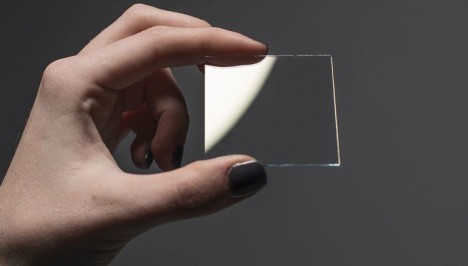
Developed by researchers at the Tokyo Institute of Industrial Science in Japan, this fresh form of glass is nearly as strong as steel, with potential applications ranging from electronics to vehicles and architecture. On scales measuring strength, this new material ranked on par with metals normally used for industrial applications.

The scientists published their findings in Nature and aim to commercialize their work in the next five years, bringing it to tablets, computers, smartphones, cars and buildings. It is still thin, like and see-through like typical glass, just far more robust. Alumina is the critical ingredient – mixed with silicon dioxide, this strengthening agent had to be added in a new way to keep it from crystallizing before the glass could form (which normally happens upon contact with the container of the glass).

“So the Tokyo team brewed up a method of making glass that required no container at all: they used gas to push the chemical components into the air, where they synthesized together. The result? A transparent ultra glass that’s 50% alumina and rivals the Young’s modulus of steel and iron, which measures rigidity and elasticity in solids.” Unlike traditional ultra-strong glass, this has a very promising strength-to-weight ratio and even thin layers are potentially incredibly resilient to damage or destruction.

